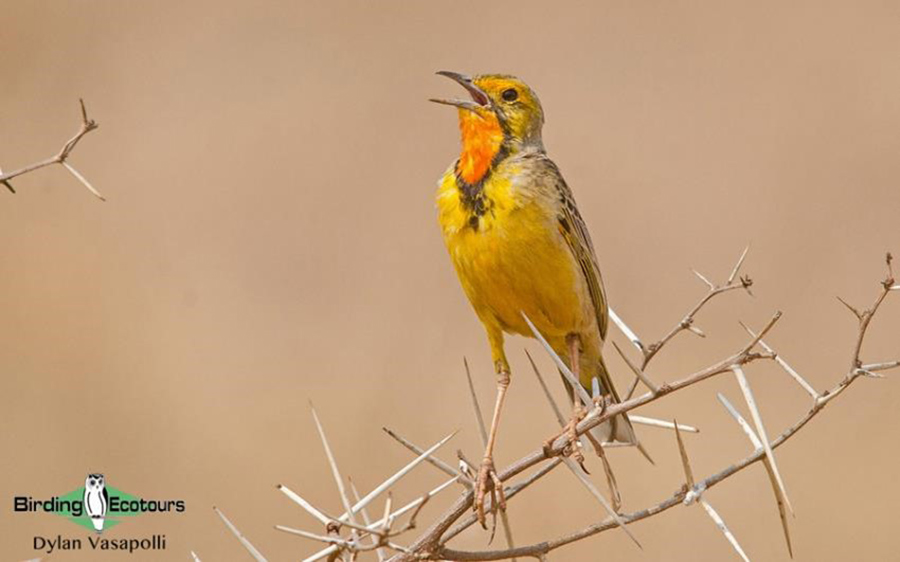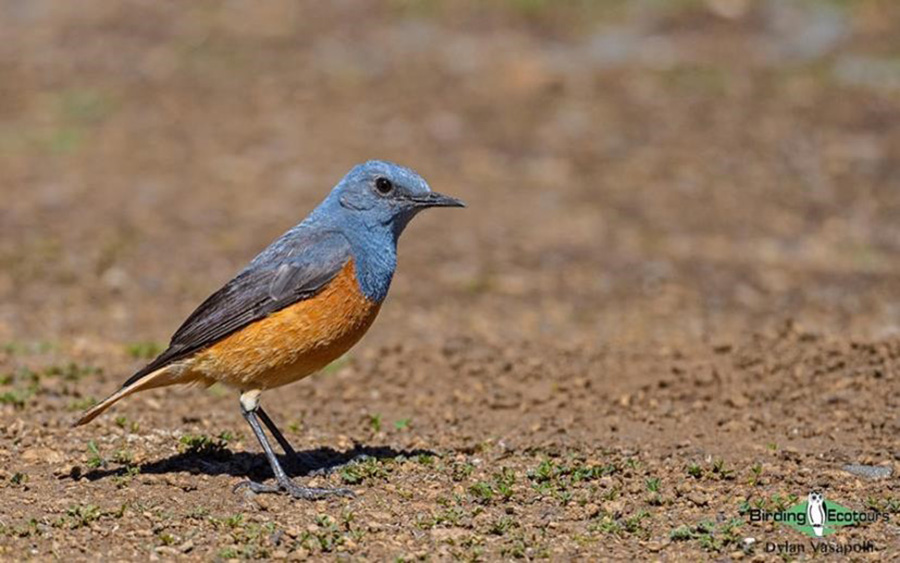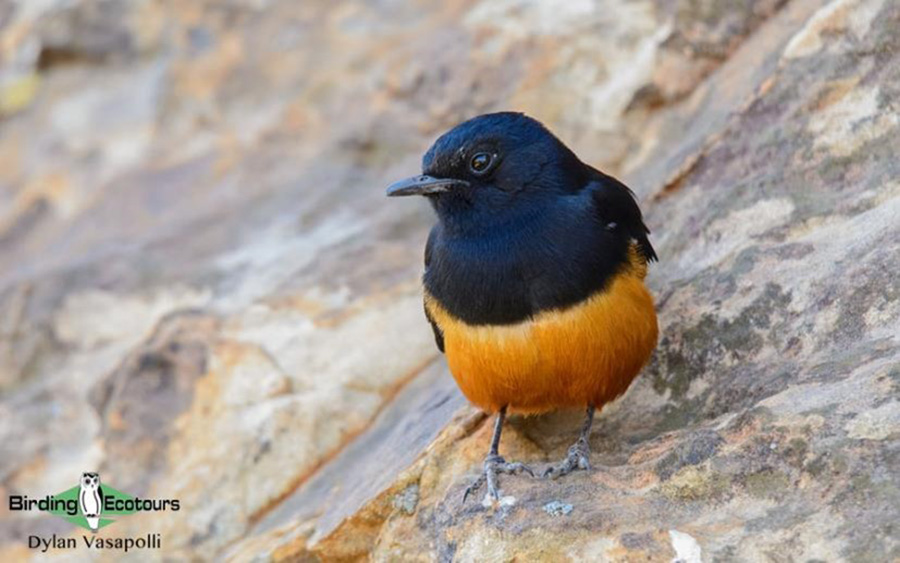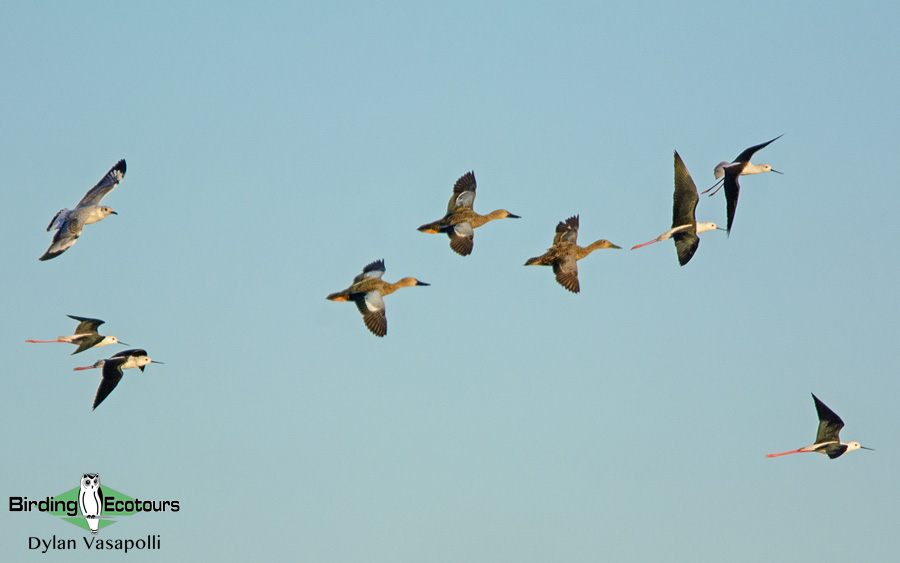Go to South Africa Day Tours | Full length South Africa birding tours | African trip reports | All our birding tours
DOWNLOAD TRIP REPORT
9 JUNE 2021
By Dylan Vasapolli

Overview
This Johannesburg-based, South Africa, birding day tour takes us to some of the fantastic birding sites found to the south of the city. Namely, the excellent Suikerbosrand Nature Reserve, and the south-eastern wetlands around Marievale Bird Sanctuary or the Tsakane Pans.
This trip was carried out for a single client, Alma, and saw us concentrate on getting photos of the many birds we saw. The morning saw us enjoy fantastic birding conditions, however much of the afternoon was spent in less-than-ideal conditions, with a mix of rain and heavy winds. We enjoyed excellent birding, throughout most of the day, and ended the day off with around 80 species, almost all of which were photographed and many of them photographed well.
Detailed Report
After collecting Alma from her accommodation, we made our way to the south side of Johannesburg, where the Suikerbosrand Nature Reserve was our first point of call. A petrol station stop gave us our first birds of the day, with Crowned Lapwing, Black-headed Heron, African Sacred Ibis, Cape Wagtail and Long-tailed Widowbird all showing well. The entrance road to the reserve was birdy and provided further species such as Black-winged Kite, Southern Fiscal, African Stonechat, Levaillant’s Cisticola, Cape Longclaw, our first of many Mountain Wheatears, a surprise Sentinel Rock Thrush (a winter visitor to the area, but usually found at the top of the mountains and not on the lower-lying entrance road) and White-browed Sparrow-Weaver.

Once in the reserve, we made our way to the main Diepkloof Visitor Centre and picnic grounds where we enjoyed some coffee and breakfast, before wandering around these very birdy grounds. The time flew by here, and before we knew it, we had spent a few hours birding the area. As usual, the birding was excellent, and we enjoyed an almost non-stop contingent of birds. Some of the special species we found here included a trio of Mousebirds, Speckled, Red-faced and the locally scarce White-backed, comical Green Wood Hoopoes, a trio of colorful Barbets, including Crested, Black-collared and Acacia Pied, a pair of Red-throated Wrynecks, the dainty Fairy Flycatcher (a winter visitor to the area), a very vocal Ashy Tit, noisy Wailing Cisticolas, Bar-throated Apalis, Chestnut-vented Warbler, a stunning male Cape Rock Thrush, a group of extremely confiding ‘chats’ made up of Familiar Chat, Mountain Wheatear, Mocking Cliff Chat, Cape Robin-Chat and Fiscal Flycatcher (that we spent a short while enjoying and getting excellent views of), Thick-billed Weaver, Nicholson’s Pipit, Yellow Canary and Cape Bunting. Additionally, we also enjoyed the likes of both Dark-capped and African Red-eyed Bulbuls (giving good comparative views), Black-chested Prinia, Cape White-eye, Karoo Thrush, Cape Sparrow, Red-billed Quelea, Southern Masked Weaver, Southern Red Bishop (the latter three feeding in a large mixed group) and Streaky-headed Seedeater.

Eventually we broke for a quick picnic lunch, but at this point the weather unfortunately turned, with cloud cover moving in and a cold wind picking up. We made for the plateau at the top of the reserve, where we did a short loop trying for some of the specials, such as Eastern Long-billed Lark and Grey-winged Francolin, but the cold wind kept the activity levels very low here, with only a Bokmakierie, Mountain Wheatears and Cape Buntings showing. Our last bird sightings before leaving the reserve were of Swainson’s Spurfowl and the delightful Cape Longclaw.
The sky was now getting quite dark, and with only about two hours left before sunset, we made our way to the Tsakane Pans, outside Nigel. As soon as we arrived, it started raining (unusual for this time of year), however we were fortunately able to drive along the edge of one of the pans, where we were able to see a wide range of water birds, without getting wet. We spent roughly an hour birding this area, before losing all the light and calling it a day. The open water held hundreds of waterfowl consisting of a wide variety of species – Egyptian Goose, Blue-billed (Hottentot), Red-billed and Cape Teals, Cape Shoveler, Yellow-billed Duck, Southern Pochard, Maccoa Duck, Little and Black-necked Grebes and Red-knobbed Coot all being present. A lone Greater Flamingo did a flyby overhead, and the reedy edges gave us a few of the large African Swamphen. The shallower reaches of the dam held numbers of Black-winged Stilts and Pied Avocets, and the area surrounding the dam produced Glossy and African Sacred Ibises, Reed Cormorant, Grey-headed Gull, a stunning Purple Heron, all the while, good numbers of Brown-throated Martins flew up and down.

